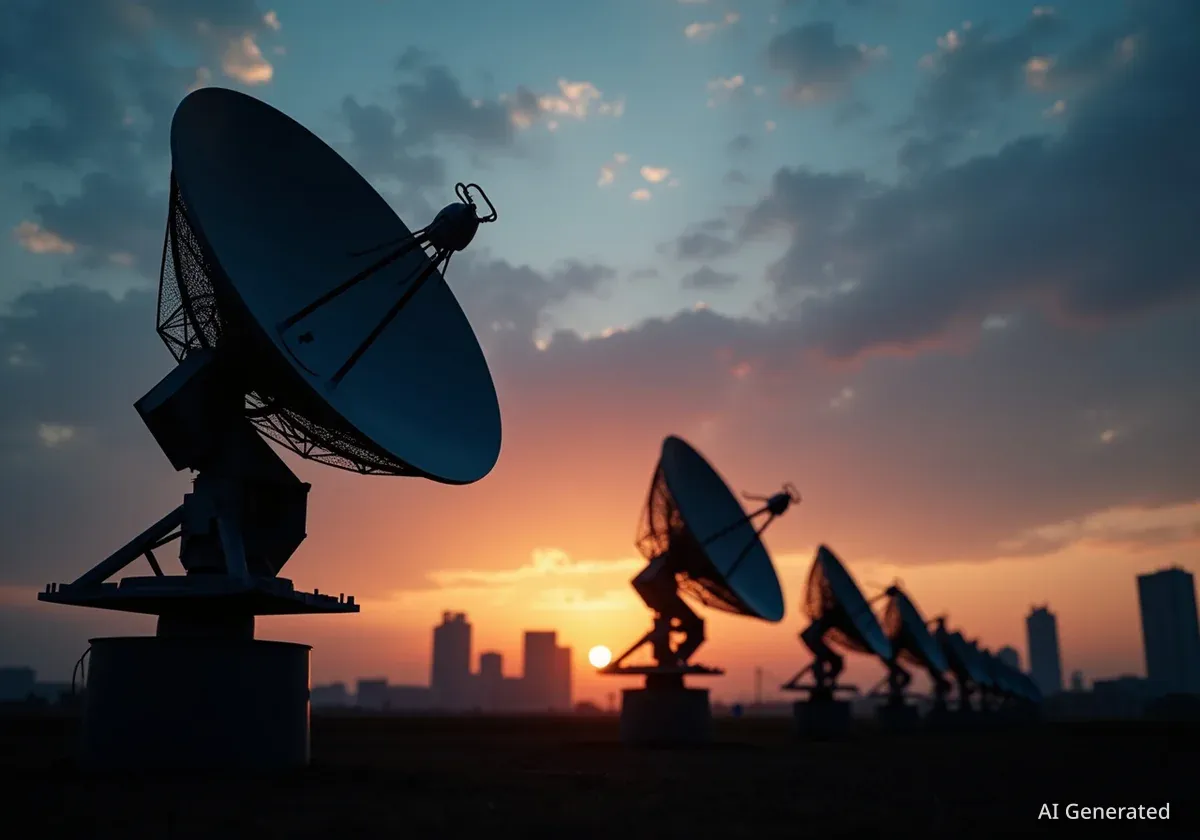Australia's Space Command is actively developing its approach to "space control" as part of a broader update to the nation's 2024 National Defence Strategy. A senior military official confirmed that the country is prioritizing partnerships and commercial solutions to build its capabilities, aiming to contribute to regional security while managing resources effectively.
Key Takeaways
- Australia is defining its "space control" capabilities as a key part of its updated National Defence Strategy.
- The strategy, known as Concept SELENE, prioritizes leveraging commercial and allied space assets before developing sovereign systems.
- The Defence Department has committed between $9 to $12 billion AUD for military space programs over the next decade.
- Key focus areas include space control, space domain awareness (SDA), satellite communications (SATCOM), and intelligence, surveillance, and reconnaissance (ISR).
Defining Australia's Space Control Ambitions
As the Australian Department of Defence reviews its national strategy, a central question is how the nation can best contribute to security in the space domain. According to Army Brig. Gen. Christopher Gardiner, the space and cyber attaché at the Australian Embassy in Washington, this involves a careful evaluation of potential capabilities.
Gardiner explained that Australia's approach to space control is being shaped by a cooperative mindset. "With space control, [we’re] looking at … how do we as Australia best contribute not only to the defense of Australia and our immediate region, but then also [to] a credible capability, cooperatively within a partnership?" he stated during an online interview with the US Air and Space Force Association.
He suggested that Australia's contribution could involve ground-based systems. "Thinking from my perspective, anyway, you might have terrestrial-based effectors. You’ll have sensors and other pieces that enable the contribution through that space mission area," Gardiner added.
What is Space Control?
Space control refers to a military's ability to ensure freedom of action in space while, if necessary, denying an adversary the same freedom. According to analysis of Australian defense concepts, this can include both defensive measures to protect friendly satellites and offensive counterspace actions like jamming, spoofing, or cyber-attacks against an adversary's space assets.
Concept SELENE The Guiding Framework
The Australian Defence Force's (ADF) approach to space operations is guided by a framework known as Concept SELENE. This internal document outlines how the ADF intends to utilize the space domain and build resilience. Gardiner noted that the concept acknowledges the practical limits of a sovereign-only approach.
"Within that, it actually recognizes that we don’t have enough resources to build that resilient architecture in a sovereign sense," Gardiner explained. "We need to partner and we need to cooperate to generate the resiliency effect."
This principle has led Australian Space Command to adopt an acquisition model similar to that of the U.S. Space Force. The strategy follows a clear hierarchy: first, leverage commercial capabilities; second, collaborate with partners and allies; and only as a final option, build unique sovereign space systems.
The core objective of Concept SELENE was highlighted in an article by the Royal Australian Army's professional development journal, The Cove.
According to the journal, Concept SELENE's central tenant is: "The ADF will seek space advantage to enable freedom of action by temporally assuring access and disrupting or denying an adversary use of the space domain, as required."
Progress Across Four Key Focus Areas
Space control is one of four primary focus areas for Australian Space Command. Gardiner confirmed that tangible progress is being made across all pillars, supported by a significant financial commitment from the Defence Department to invest $9 to $12 billion AUD ($5.9 to $7.9 billion USD) in military space programs over the next ten years.
Space Domain Awareness (SDA) and ISR
In the area of space domain awareness, which involves monitoring objects in orbit, Gardiner pointed to a major achievement. "Within space domain awareness, the achievement of the Deep Space Advanced Radar Capability is excellent," he said. This system enhances Australia's ability to track satellites and debris.
For intelligence, surveillance, and reconnaissance (ISR), Australia is deepening its cooperation with key allies. In 2022, the government announced a commitment to "a broad range of cooperative satellite activities" with the U.S. National Reconnaissance Office (NRO), the agency that operates America's spy satellites.
Satellite Communications (SATCOM)
Australia's military satellite communications program is undergoing a strategic reset. In November 2024, the government canceled a major program known as JP 9102. The $5.3 billion AUD project was intended to build a sovereign constellation of three to five encrypted military communications satellites with Lockheed Martin.
However, the ADF has since moved forward with what appears to be a revised, potentially smaller-scale program called SPA9102. In July, the ADF issued a Request for Information (RFI) to industry for this new initiative.
According to reports, the RFI seeks solutions for a UHF-band payload in a geostationary orbit with a view of Australia. Crucially, it remains open to a variety of procurement models, including:
- A hosted payload on a commercial satellite
- A network of small or nano-satellites
- Leveraging allied constellations with sovereign enhancements
This flexible approach aligns with the core principles of Concept SELENE, prioritizing efficiency and partnership over building a bespoke system from scratch.
Integrating Space into National Defence
The development of Australia's space capabilities is occurring in parallel with a comprehensive review of the 2024 National Defence Strategy. This process ensures that investments and strategic goals are aligned with the country's broader security objectives.
"Right now we’re in the middle of a National Defence Strategy review. So, in ’24 we had the current release, and we’ll receive our next in ’26," Gardiner stated. He described it as a "robust process" that considers all implications and works in conjunction with the Integrated Investment Program to guide future procurement.
This ongoing review will continue to shape how Australian Space Command develops its capabilities, with a clear focus on creating a credible, cooperative, and resilient presence in the increasingly vital space domain.





